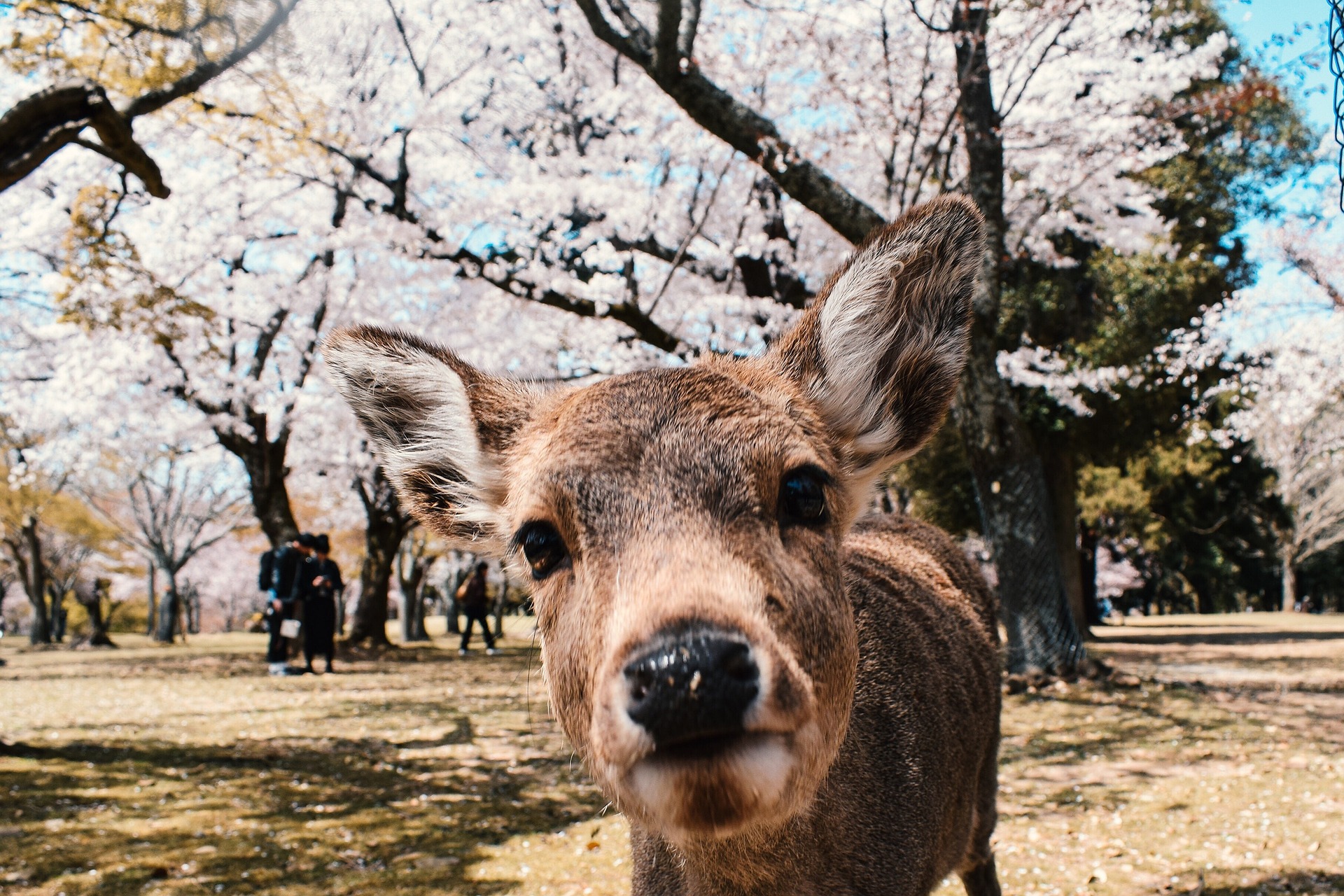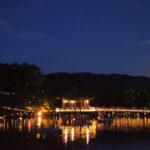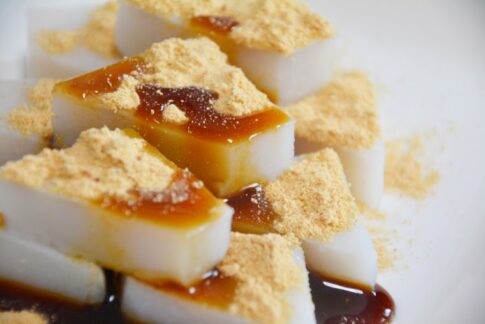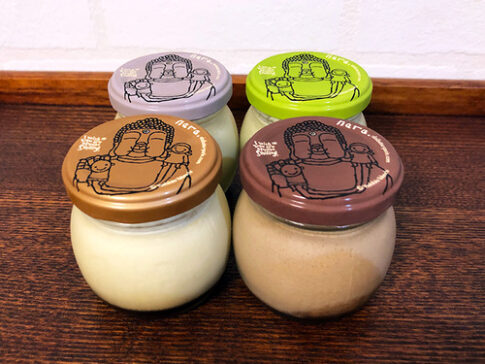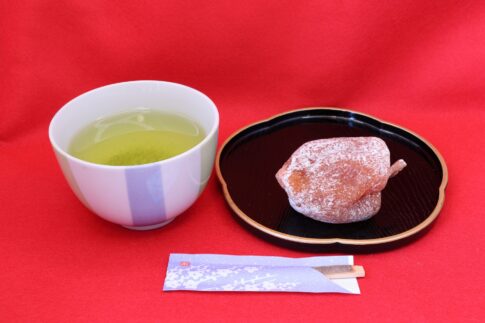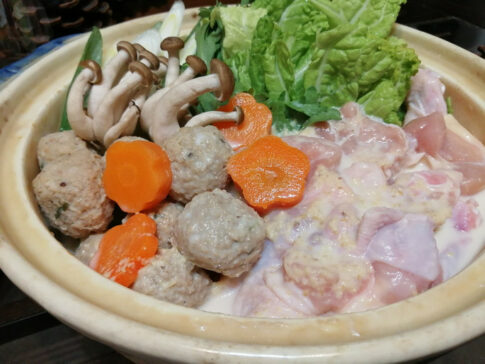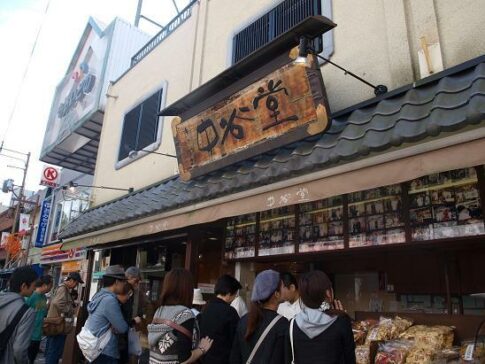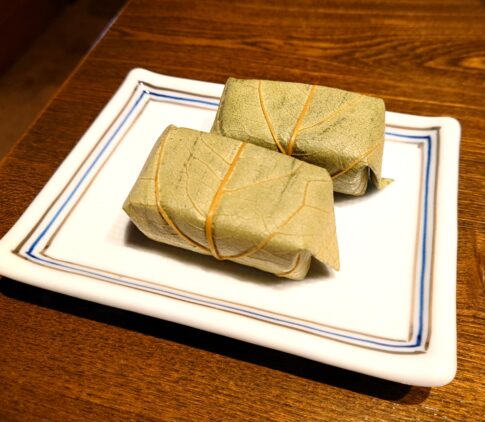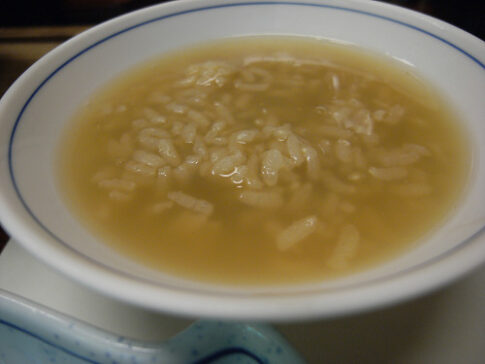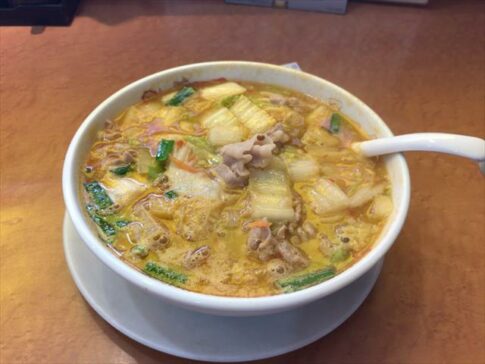Today we will introduce you 10things that you should try eating in Nara.
Maybe there are some foods that you have never heard of.
Don’t be afraid and give it a try!
Nara’s Famous Food
・Kakinoha Sushi
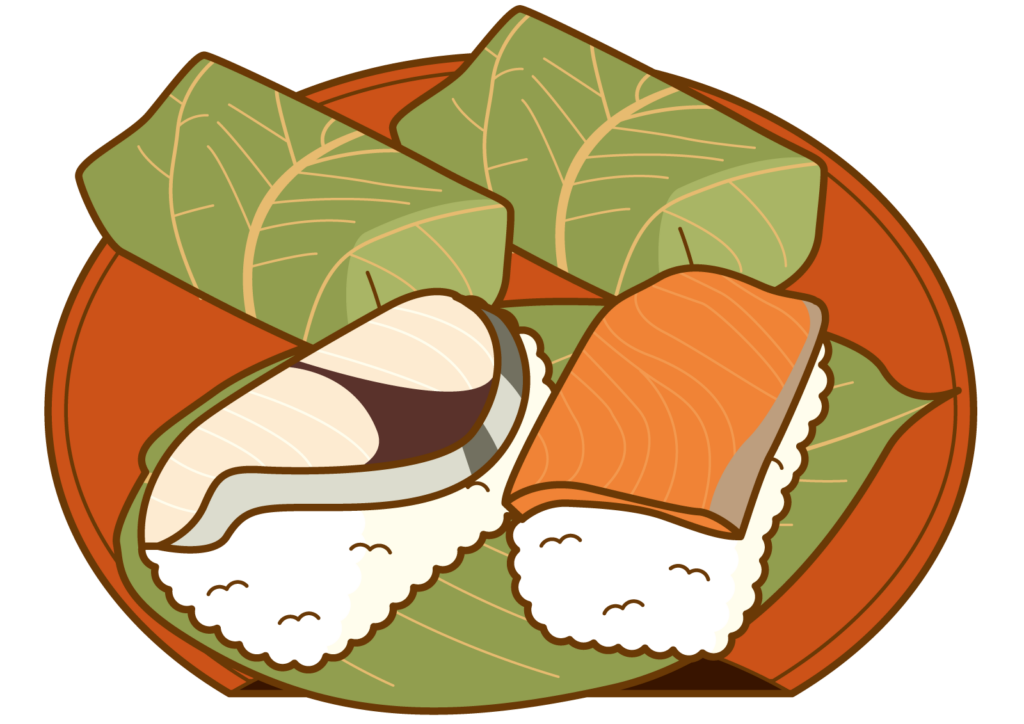
Kakinoha sushi is a bite-sized piece of vinegared rice topped with mackerel or salmon fillets and wrapped in a persimmon leaf.
In Nara’s mountain villages far from the sea, such as Gojo and the Yoshino River basin, seafood was very precious.
Since the area had long been famous for its persimmon production, it is said that the origin of this dish dates back to the time when people used the antibacterial properties of persimmon leaves to put salted mackerel on rice balls, wrapped them in persimmon leaves, and let them rest and ferment for about three days before eating them.
It is said to have been made around the middle of the Edo period (1603-1867), and is a local dish representative of Nara that has been passed down through the generations as a feast for festivals and special occasions.
・Miwa Somen
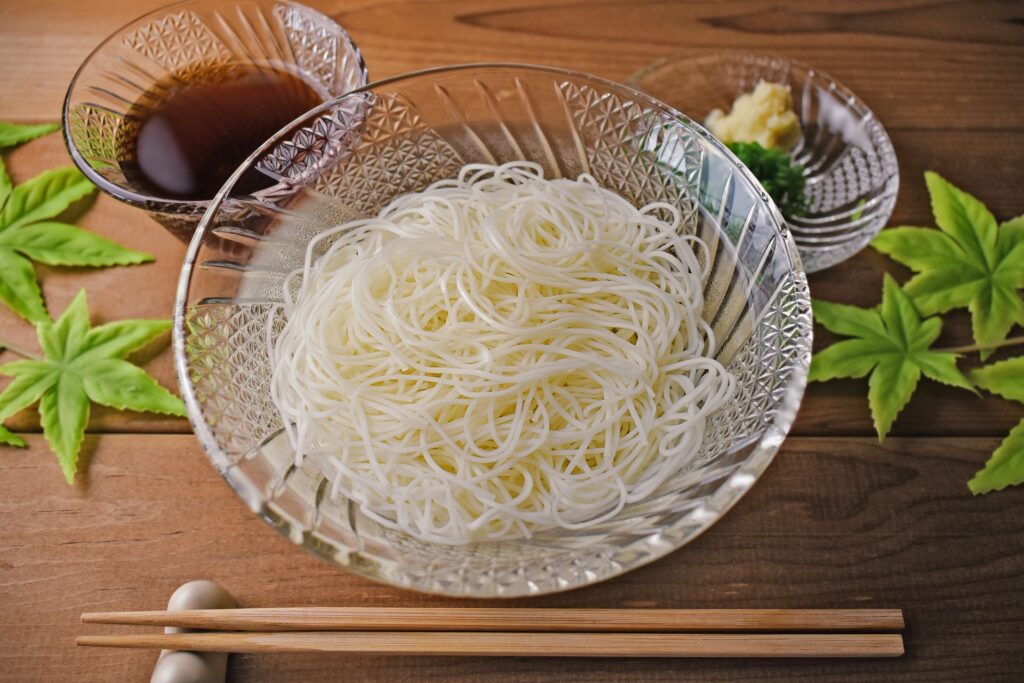
Miwa Somen” is a hand-pulled somen that has been produced in Sakurai City (Miwa area), Nara Prefecture.
It is said to be the originator of hand-pulled somen in Japan, and boasts a history of more than 1,200 years.
It is said that the origin of Miwa Somen dates back to a time when one of the descendants of the first priest of Japan’s oldest shrine, Omiwa, started making somen, a preserved food, in Miwa, which is suitable for growing flour, for people suffering from famine and epidemic diseases.
On February 5 of each year, the “Bokujo-sai” ritual to predict the somen market for the year is held at the Ogami-jinja Shrine, and the tradition is carried on to this day.
・Chagayu
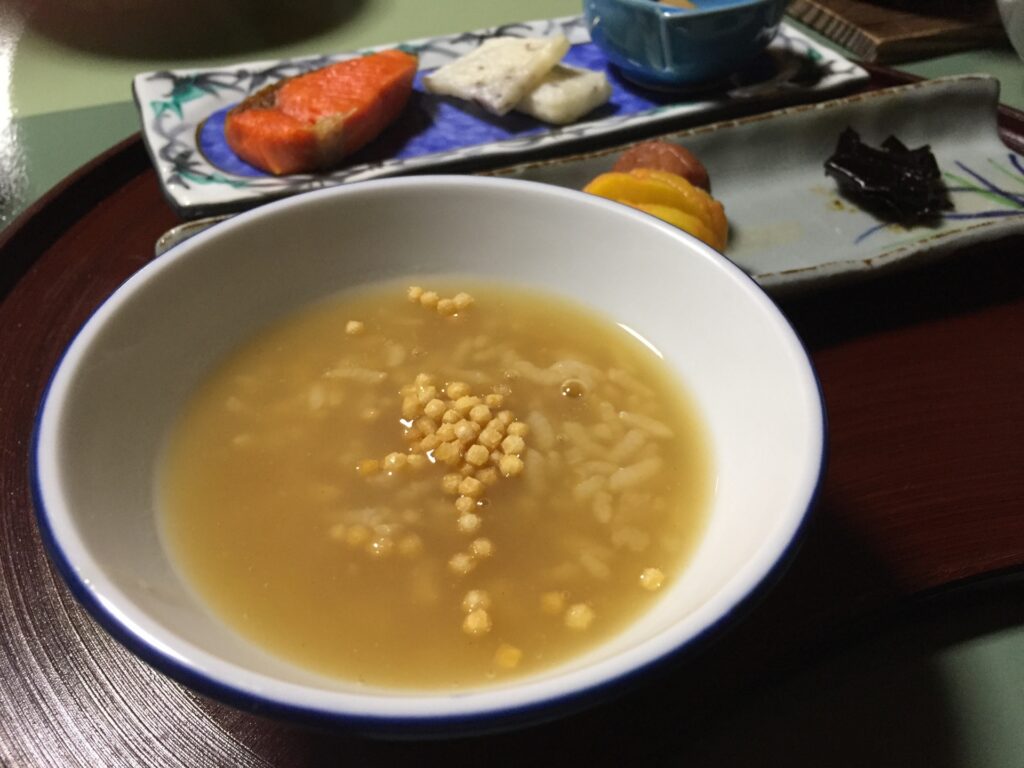
Chagayu is porridge cooked with Japanese tea.
It is usually cooked with hojicha (roasted green tea).
In western Japan, chagayu has been widely spread as a home-style dish, but it has a long history in Nara, where it has been eaten daily since the reign of Emperor Shomu.
The type and flavor of tea varies from region to region and from household to household.
It has a gentle, soothing taste and goes well with Nara’s specialty, Nara-zuke (pickles)!
・Yamato Beef
Yamato Beef is the pride of Nara.
Yamato Beef was selected as one of the “10 best cattle in Japan” in the Kamakura period (1185-1333), and has long been recognized for its quality.
It is characterized by its tender meat and marbling that gives it a melt-in-your-mouth flavor.
There are many restaurants specializing in Yamato Beef in the prefecture, as well as stores where you can enjoy Yamato Beef at reasonable prices.
If you visit Nara, you must try them! It’s a must-try gourmet!
・Asuka-nabe(pot)
Asuka-nabe(pot) is a one-pot dish of chicken and seasonal vegetables simmered in a chicken broth with milk.
It is said to have its roots in a milk pot prepared by a monk from China during the Asuka period (710-794), and has been a local dish in the Asuka and Kashihara regions for about 1,300 years.
The flavor of chicken and vegetables melts into the mild soup, giving it a creamy and elegant taste.
It is a local dish that warms the body from the inside out, and is best enjoyed during the cold winter months.
・Nara-zuke
Nara-zuke” is a pickle made by pickling vegetables such as white cucumbers, cucumbers, and ginger in salt and then marinating them in sake lees for several years until they become candy-colored.
In Nara, the birthplace of sake in Japan, it is said in an old book that the upper class aristocrats used to eat vegetables marinated in sakekasu (sake lees) about 1,300 years ago.
Later, in the early Edo period (1603-1867), Itoya Sosen, a doctor of Chinese medicine in Nara, began to sell Nara-zuke (pickled white cucumber), which is said to have been the prototype for today’s Nara-zuke.
It is one of Nara’s representative specialties, having been presented to the Imperial Court and the Tokugawa Shoguns.
・Tenri Ramen
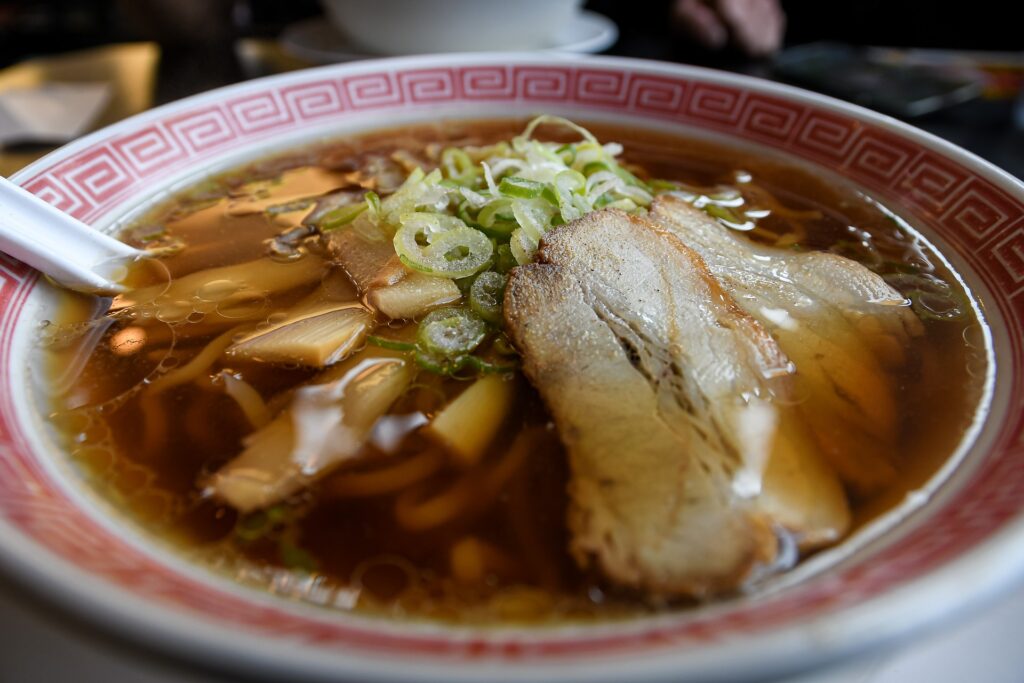
Tenri Ramen” is a stamina dish made with thin, curly noodles in a soy-sauce flavored chicken broth, topped with a variety of ingredients such as Chinese cabbage, chives, and pork.
Saika Ramen, which has 15 stores in neighboring prefectures, is said to be the originator of this ramen dish.
The slightly spicy flavor with garlic and chili peppers is addictive, and the local people of Tenri City are extremely fond of this local ramen.
・Manyo oyaki
Manyo Oyaki is a local delicacy of Asuka Village, made by blending wheat flour and buckwheat flour, filling the fermented dough with azuki bean paste or vegetable bean paste, and deep frying it in oil.
The vegetable bean paste is made with seasonal vegetables and is lightly seasoned so that the taste of the ingredients can be appreciated.
The special oyaki is fried in oil to give it an aroma and a firm texture.
・Kuzumochi
Speaking of Nara, you cannot miss out on sweets made from its specialty, Yoshino kuzu! Yoshino-honkuzu, which comes from the Yoshino region, is a very precious material from which only 10% of the kuzu root is usually extracted.
Nara’s popular “Kuzumochi” is a gem made from 100% Yoshino kuzu and finished with famous water!
The smooth texture and plumpness are irresistible!
It is fun to compare kuzumochi at famous kuzu confectionery stores!
・Persimmon Sweets
Persimmons are Nara’s autumn delicacy.
Nara Prefecture has long been known as a famous producer of persimmons, as Shiki Masaoka wrote in his haiku, “If you eat persimmons, the bell will ring at Horyu-ji Temple.
The Gojo and Yoshino areas are major persimmon production areas, and in winter, farmers in these areas produce hanging persimmons, which have become a winter tradition.
In Nara, there are also stores specializing in persimmon sweets, where visitors can enjoy the delicious taste of persimmons.
Or you could just pick up some persimmon sweets as souvenirs!
Summary
Are there any food that you have already known?
When you visit Nara, you can find many restaurants and shops.
Let’s try some of them!
